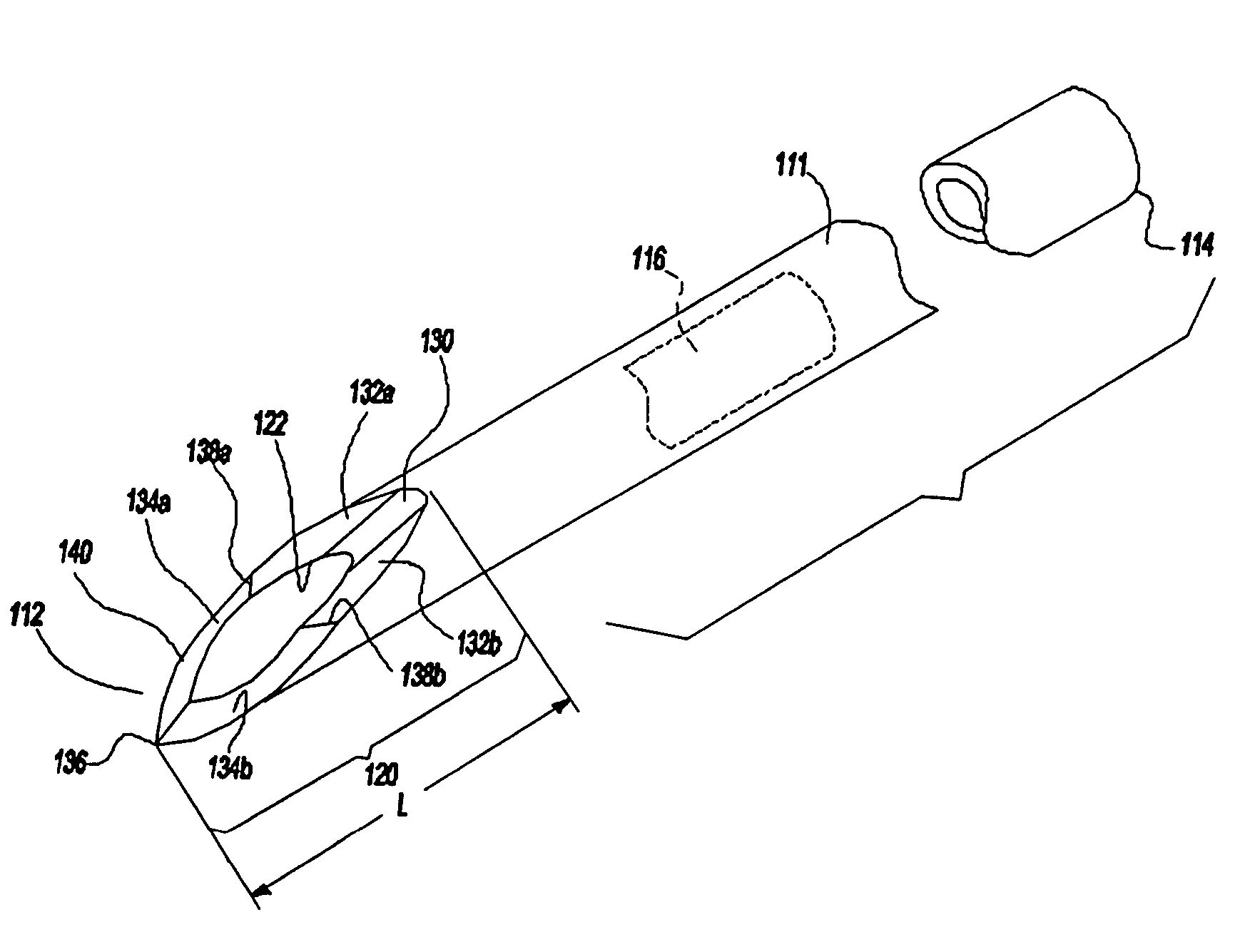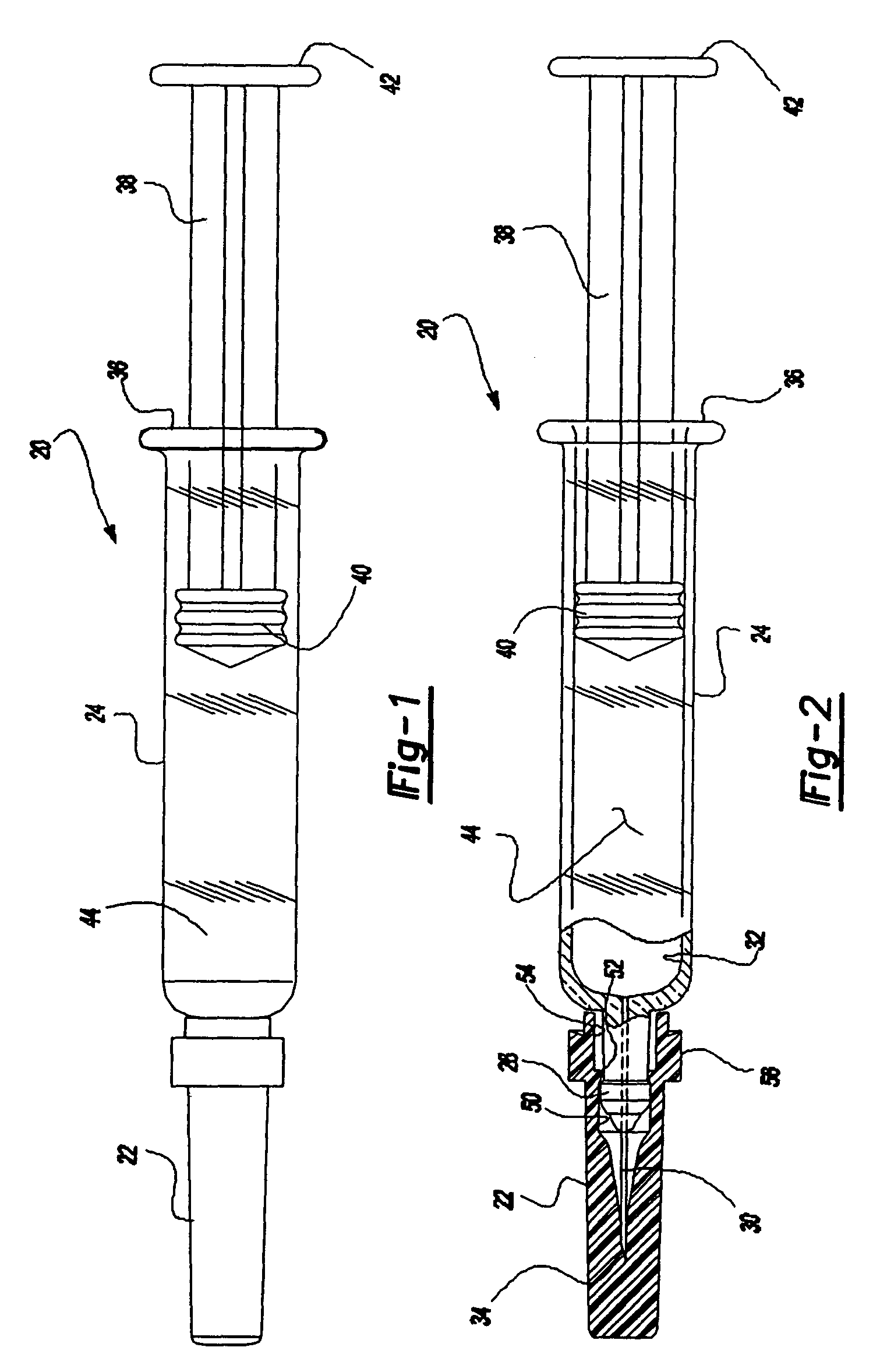Multi-beveled point needle and syringe having a multi-beveled point needle
a multi-beveled, needle-shaped technology, applied in the field of hypoodermic syringes and needles, can solve the problems of shrinkage during molding, lack of dimensional stability and coring, and the elastomer most thermoplastic elastomer provides little if any advantage over natural or synthetic, so as to reduce the height interval, and reduce the height of the inters
- Summary
- Abstract
- Description
- Claims
- Application Information
AI Technical Summary
Benefits of technology
Problems solved by technology
Method used
Image
Examples
Embodiment Construction
[0027]The syringe assembly 20 illustrated in FIGS. 1 and 2 and the needle shield or sheath illustrated in FIGS. 2 and 3 may be generally conventional in configuration except as described below and may take various forms within the purview of the appended claims. That is, the syringe assembly 20 may be any conventional injection device, such as the syringe assembly disclosed having a generally tubular barrel portion 24 including a reduced diameter tip portion 26 and a needle cannula 30 affixed by any suitable means to the tip portion 26 of the barrel, such that the lumen through the needle cannula is in fluid communication with the interior 32 of the barrel. The barrel 24 is typically formed of glass, but may also be formed of a suitable plastic, and the needle cannula 30 is typically formed of stainless steel. The sharp tip 34 of the needle cannula preferably includes a five-beveled point as shown in FIGS. 4-9 and described below.
[0028]The barrel 24 typically includes a radial flang...
PUM
| Property | Measurement | Unit |
|---|---|---|
| rotational angle | aaaaa | aaaaa |
| rotational angle | aaaaa | aaaaa |
| rotational angles | aaaaa | aaaaa |
Abstract
Description
Claims
Application Information
 Login to View More
Login to View More - R&D
- Intellectual Property
- Life Sciences
- Materials
- Tech Scout
- Unparalleled Data Quality
- Higher Quality Content
- 60% Fewer Hallucinations
Browse by: Latest US Patents, China's latest patents, Technical Efficacy Thesaurus, Application Domain, Technology Topic, Popular Technical Reports.
© 2025 PatSnap. All rights reserved.Legal|Privacy policy|Modern Slavery Act Transparency Statement|Sitemap|About US| Contact US: help@patsnap.com



